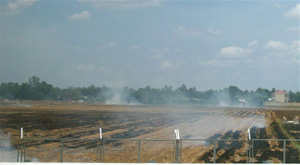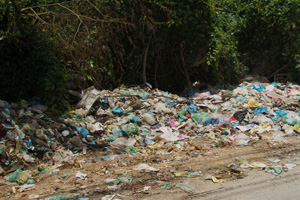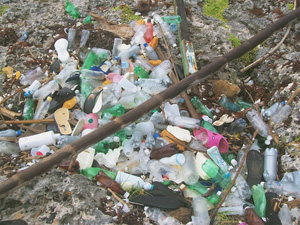Book Review
Hot, Flat and Crowded: Why We Need a Green Revolution — and How It Can Renew America Release 2.0 by Thomas L. Friedman. New York, Picador, 2009

This is an important book by a most influential columnist. It is probably helping to guide President Obama’s thinking on America’s energy future. His twin theses are the need to turn down the carbon load, and how the USA can claim its economic and technological pre-eminence by embracing this challenge. A secondary effort, less successful I think, is to link the ongoing Great Recession with our environmental disregard. It’s an excellent exposition of the financial crash (when bankers gave loans with no expectation they would be repaid) but linking it to our disregard of basic energy/pollution arithmetic is a bit of a stretch.
You can read this book for the main thrusts, or for the individual chapters. Some are near definitive, for example the environmental role being played by China (Part 4) — already equaling America as a consumer and polluter, but beginning to realize the toll they must extract. China’s role is critical as its citizens continue to race towards American-style consumption.
Choice bits of the book evoke the beauty of nature. Others are quotations about the mess we are leaving to following generations, who will not be able to enjoy nature as we know it. If you don’t quite grasp the decline that awaits inaction, read Friedman. We’re not heading for a Krakatoa but we are living with a cancer that is consuming our earth. It is visible in every corner. We are creating a planet fit only for insects, not that they will escape the consequences either.
What Friedman postulates is that ALL nations will decline. He feels that China and America will become great collaborators against energy waste and the build-up of filth and particulates, on land and sea but most importantly in the air where CO2 build-up contributes to an ever-hotter earth.
He’s too kind to mention that one nation can survive, subjugating the others and turning them into farms for its own benefit. Whatever nation builds the strongest nuclear, biological and chemical force and the strongest army, and has no compunction about using overweening force, will win. The Pax Americana is finished, and it was an anomaly.
For global warming skeptics, Friedman’s data presentation is excellent. If the CO2 concentration is double what it was on average over the last 10,000 years, are there no consequences?

The main problem with this book is the sugar coating. He doesn’t want to frighten us into inaction so he holds forth the promise that America can rescue its own economy and its world leadership by embracing “clean” energy. Yes, the USA should go green for bucks. But even as he was writing, China became the world’s largest producer of windmills.
Even in a book review, I don’t want to use the term clean energy. His own data shows it’s an oxymoron but he hangs so much on a new, clean source to replace fossil fuels! Even if controlled fusion power became available tomorrow (my thought, not his) transmission losses and other problems would render it “dirty”. Elsewhere he shows some of the potential of conservation, but in general he seems to feel that a magical breakthrough will occur. It’s at least one-sixth of his argument and it weakens all of the others.
It’s not the only case of technological weakness in this book. Friedman postulates autos that will CONTRIBUTE energy. (Even perpetual motion “inventors” don’t go that far.) He seems to visualize the world’s population, including Nigeria’s, living blissfully in Main Street American homes with American modern conveniences. He refers to refrigerators, stoves, air conditioners, microwaves and water heaters, failing to mention flash water heaters or none at all. He dreams this at a time when Japanese, South Korean and German appliances tend to be better and more efficient. This is the blind side of Thomas L. Friedman, even when his tables show that the US has lost its technological lead in most fields.
This seems to be his thesis: We will find a way to produce abundant, clean, affordable energy. Then we can all be happy and keep on what we’re currently doing, with some adjustments. Pollyanna!
It’s a comprehensive book but some things are missing. Mention of Canada as a major energy supplier is missing. The role of the late Soviet and East German pollution is missing, as is the contribution of wood burning over the centuries (and today) to both energy supply and CO2 generation. Hydro power is nowhere mentioned, and Haiti isn’t in the index. He falsely gives the prize for per capita energy consumption to the USA. (Canada is worse.) He repeats the myth that the tragedy of Hurricane Katrina was a global warming tragedy. His list of mega cities doesn’t mention Mexico City. His list of “fuels from hell” does not include searing banks of solar panels and ruined vistas of windmills. He doesn’t list wood as a “fuel from hell”! Why not? Because it’s renewable? Who cares, if you’re dying of air pollution?
Friedman whines about venture capitalists, who would prefer a guaranteed base price for less polluting energy. (Wouldn’t ALL capitalists like a guaranteed return?) He leaps aboard the Toyota Prius, which although a brilliant piece of engineering, simply extends the age of the automobile (and drags around a ton of weight). He extols plug-in autos similarly — fine, let them switch from gasoline to coal-fired energy, right?
World birth control needs are insufficiently addressed, and he gives a low billing to topsoil losses, water problems, governance, flooding and continuing wood burning for fuel. Firing of crops around the world continues but this is not named as a problem, whereas burning to clear brush is given a full and sorry accounting.

Let me not be too harsh. Friedman gives us the “Americum” as a unit of national consumption (p. 88); a wonderful table of atmospheric CO2 over the eons (167); the potential “non-linear response” of the world’s climate system (26 and 80); energy and resource supply/demand (88 and chapter 5); Infoplease.com reference (64); trivialization of the green movement (205, 253, 465, but he doesn’t include flowers imported into Cayman for Earth Day). He handles climate change denial 146ff); a nature ethic (51, 55, 221, 462); natural beauty (224); the Red List (190 but not in the index); sustainability (defined p. 52) and excellent charts on the major shifts required if the planetary load is to be reduced (242, 259, 260, 271 and chapter 19 in particular). Incidentally, the score I’d give our world on his “essential” five or six adaptations is 6%, not exactly a passing grade. And one of the five, a deal breaker, looks to be a lost cause.
This is a great book, but it’s a Pollyanna book. We can have clean power! Everyone can share the American Dream! We will have higher energy prices but lower energy bills! China and the US will compete for the clean business like close brothers!
My very personal take on this book: Read it — I urge you.
jwp
Cayman Brac
20100502
